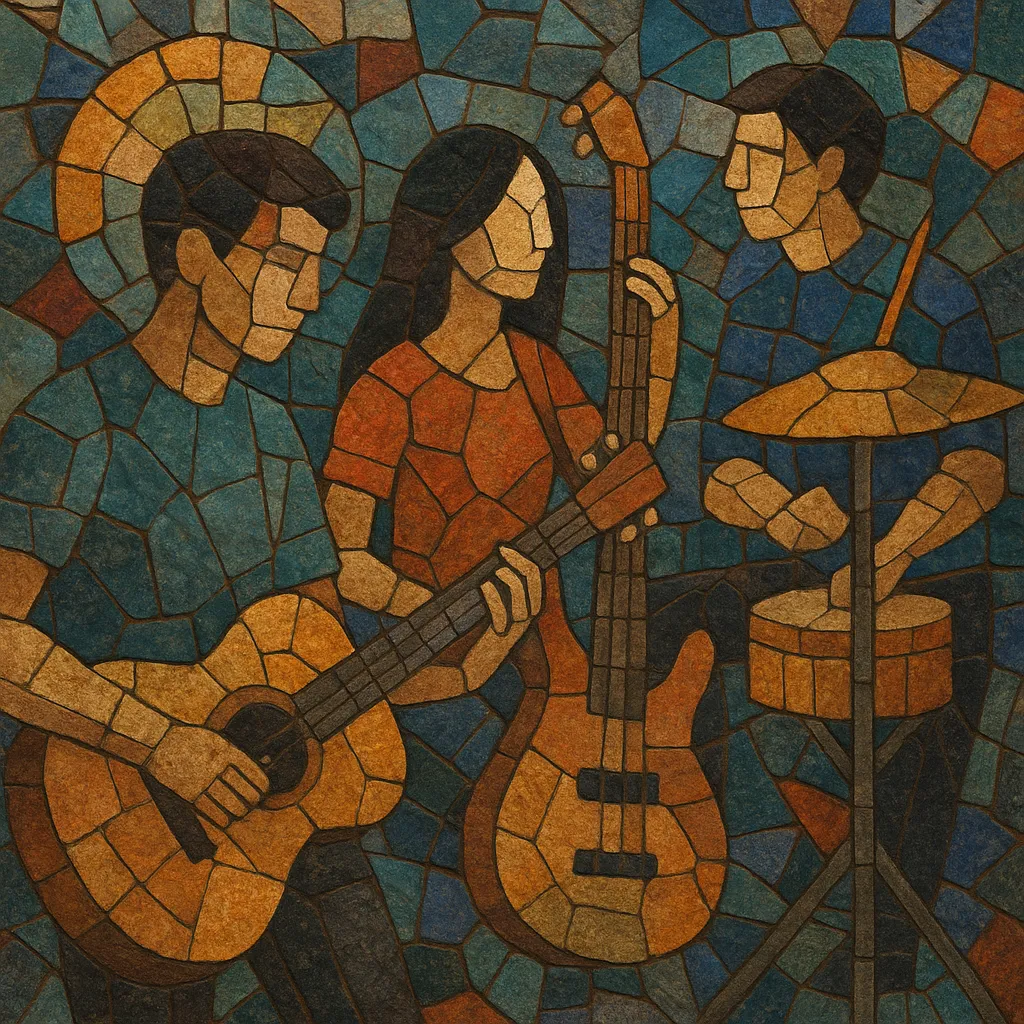
Pinoy indie is the independent music movement of the Philippines that blends a DIY ethos with a broad spectrum of sounds drawn from indie rock, indie pop, dream pop/shoegaze, math rock, folk, and indietronica. It is less about one narrow sonic template and more about a shared spirit of self-reliance, creative experimentation, and community-driven release and touring.
Hallmarks include clean-to-textural guitars, melodic bass lines, roomy or gently compressed drums, and the tasteful use of synths and ambient layers. Artists frequently sing in Tagalog/Filipino, English, or code-switching “Taglish,” and lyrics often focus on urban life, friendship, romance, and introspective “hugot” themes. The scene is closely tied to intimate venues, boutique labels, and online platforms that enable artists to record, distribute, and promote music outside major-label structures.
While independent-minded Filipino bands existed in the 1990s alongside the alt-rock boom, the distinct Pinoy indie movement coalesced in the 2000s as artists began organizing outside major labels. Small venues and art spaces (e.g., SaGuijo, Cubao X) and DIY promoters catalyzed a culture that prized original songwriting, community, and self-released recordings.
Boutique labels and collectives such as Terno Recordings, Lilystars, and other homegrown imprints nurtured artists with patient development and a focus on artistic identity. Up Dharma Down’s emergence signaled that a thoughtful, synth-tinged indie sound could gain national attention without abandoning independence.
Bandcamp, SoundCloud, and social media gave Pinoy indie a larger, more global audience. Sub-scenes flourished: math rock (e.g., instrumental trios and clean, tapping guitar styles), dream pop/shoegaze, folk-pop, and indietronica. Festivals and showcases (Fête de la Musique Philippines, Wanderland, campus and bar circuits) brought indie acts to bigger stages, while the “hugot” lyrical wave made intimate, emotionally direct writing widely popular.
During and after the pandemic, livestreams, YouTube sessions, and playlist culture helped artists sustain momentum. Some acts crossed into mainstream consciousness while maintaining indie roots and aesthetics. The movement remains decentralized and stylistically open, with Tagalog and multilingual songwriting, collaborative releases, and a strong emphasis on community ethics and live performance.
Start with a guitar-bass-drums foundation and layer clean or mildly overdriven guitars with chorus, delay, and reverb. Add subtle synth pads or leads for color; keep tones warm and melodic rather than harsh.
Use diatonic progressions with occasional modal mixture (e.g., iv in major) and extended chords (maj7, add9) for lushness. Melodies should be singable and emotive, often highlighting lyrical phrasing. Countermelodies from guitar or synth help create the scene’s signature “shimmer.”
Aim for mid-tempo grooves with a relaxed pocket. For math-rock flavors, introduce syncopation, odd meters (e.g., 5/4, 7/8) in sections, or interlocking guitar patterns while keeping the overall feel accessible.
Write introspective, conversational lyrics about everyday life, friendship, and love, embracing “hugot” storytelling. Feel free to use Tagalog/Filipino, English, or Taglish to match natural speech rhythms and reach local and global audiences.
Favor dynamic builds: intimate verses that swell into expansive choruses or post-choruses. Use textural breaks (guitar swells, synth pads) and refrain hooks. Keep arrangements lean enough to perform live in small venues, but rich with interplay.
Track at home or in budget-friendly studios; prioritize clear vocals and guitar textures. Use tasteful compression and gentle bus glue; avoid over-limiting. Release via streaming platforms and Bandcamp, and support with live videos, sessions, and community gigs.
Let OPM melodic sensibilities inform phrasing and harmony. Collaborate with peers across scenes (folk-pop, math rock, indie electronic) to reflect the community-driven nature of Pinoy indie.

